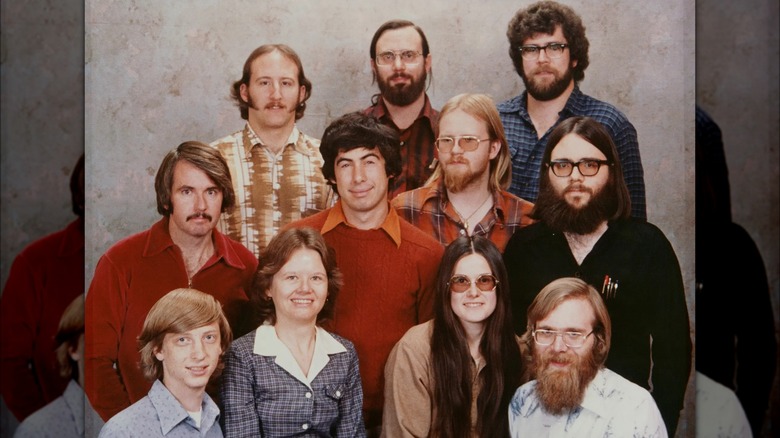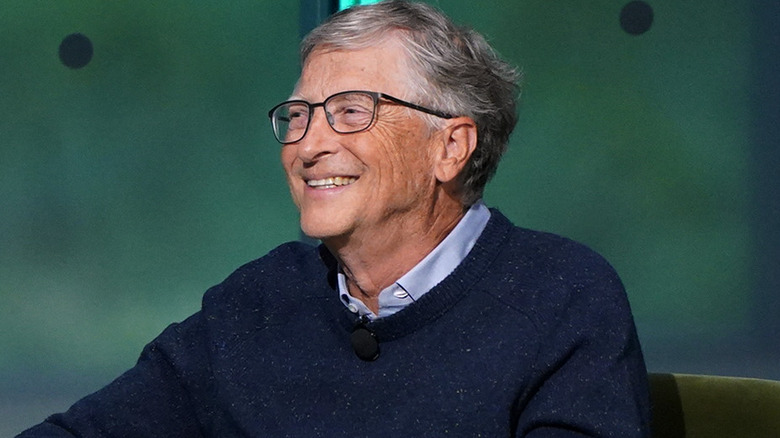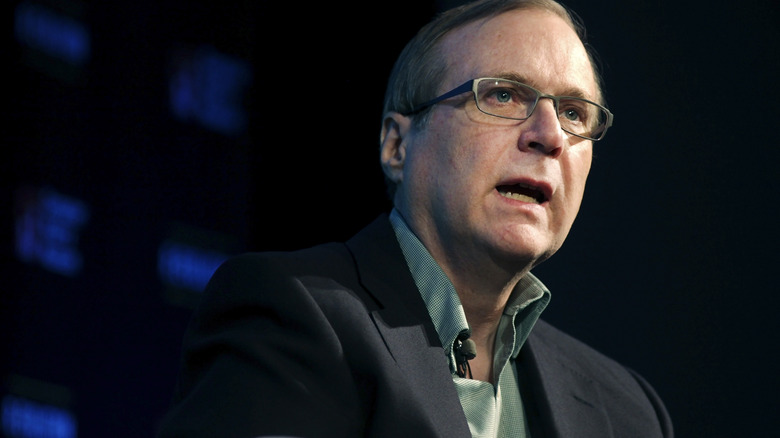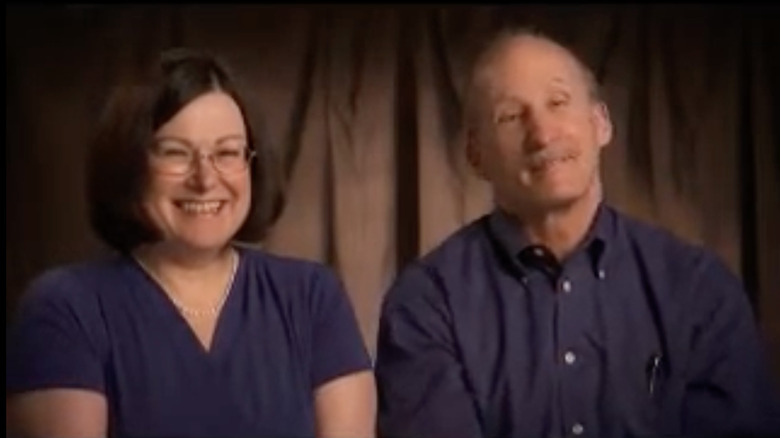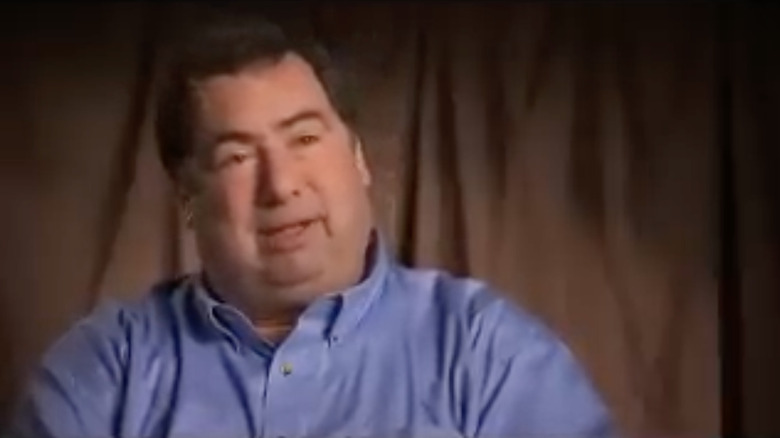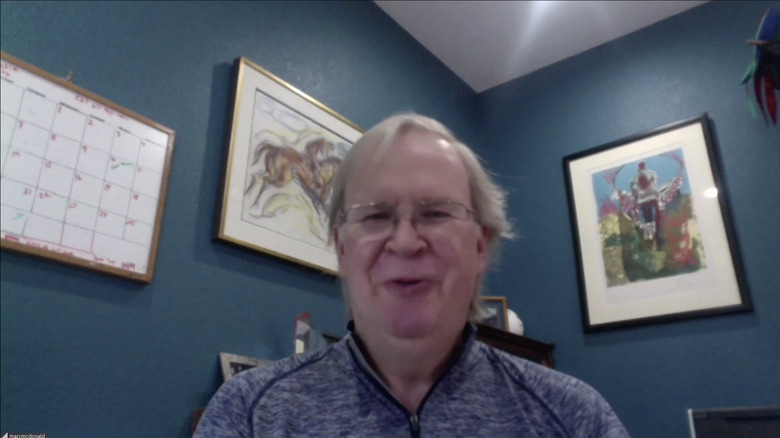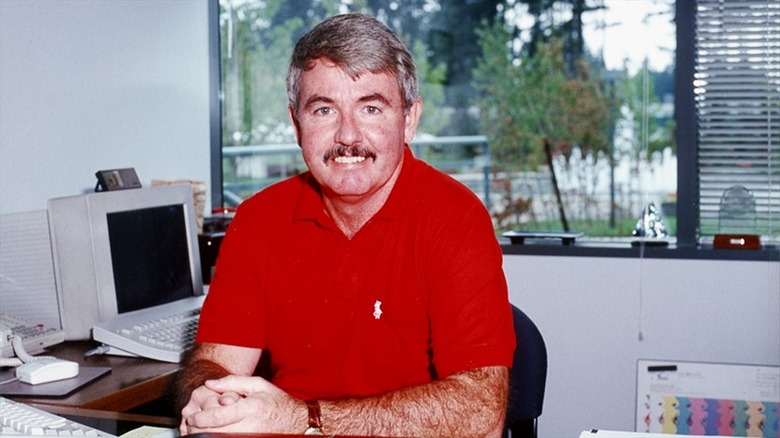Where Microsoft's First Employees Are Today
Microsoft was founded on April 4, 1975, in Albuquerque, New Mexico, by Bill Gates and Paul Allen. In 1978, stemming from programmer Bob Greenberg winning a radio contest for a free, professionally shot portrait, the original team, which was about to relocate to Washington state, took a group portrait that has become an iconic representation of the company's early days.
"As a suitable culmination of Microsoft's productive stay in Albuquerque, I have arranged a sitting to make a company-wide portrait," Greenberg wrote in a memo on December 6, 1978. He asked his coworkers to assemble at Royal Frontier Studios wearing "regular informal attire." As programmer Marc McDonald recalled in 2008, the photo stands out in large part because it's the only photo of the staff from that time frame.
In the almost 45 years since the photo was taken, though, what's happened to the key staff members pictured? Some, of course, like co-founders Bill Gates and Paul Allen, have well-documented trajectories, but for the others, it's less clear, so let's examine a few of them.
Bill Gates
No name is more synonymous with Microsoft than co-founder Bill Gates, who became the face of the company as it blew up with the success of MS-DOS and Windows until moving on to part-time work in 2008. Though Gates's role would shift over time, he was still actively involved in coding Microsoft products as late as 1989. Previously the world's richest man for most of 1995 through 2017, Gates currently sits at number seven as of this writing, according to the real-time billionaires list maintained by Forbes. He essentially ceded his spot due to a $59 billion donation to his charitable foundation.
Though Gates stepped down from his role as Microsoft's non-executive chairman of the board in 2014 as a way to increase his workload at the company in an advisory capacity, he left the board entirely in March 2020 to focus all of his energies on his philanthropic efforts. Gates did say in a statement on his LinkedIn page, though, that "stepping down from the board in no way means stepping away from the company" and that "I will continue to [...] help shape the vision and achieve the company's ambitious goals."
Though Gates's charitable efforts are fairly diverse, being repeatedly interviewed as an expert on the COVID-19 pandemic at its height made him the face of various unfounded conspiracy theories. His alliance with Dr. Anthony Fauci, the government face of the pandemic as director of NIH's National Institute of Allergy and Infectious Diseases, didn't help matters in that regard, either.
Paul Allen
Paul Allen co-founded Microsoft with Bill Gates, although his day-to-day role in the company did not last particularly long. A 1982 lymphoma diagnosis brought his work to a halt en route to a negotiated exit in 1983 due to issues with Gates. He stayed on the company's board of directors as vice chairman until 2000, continuing some work in an advisory capacity thereafter.
In the subsequent decades, through Allen's death in 2018, he invested in various companies. He spent heavily on sports franchises, owning the National Football League's Seattle Seahawks and the National Basketball Association's Portland Trail Blazers, as well as becoming a part-owner of Major League Soccer's Seattle Sounders en route to it becoming one of MSL's most popular teams. With Vulcan Inc. set up to manage his fortune, Allen would use the firm to invest in other large companies, even having a controlling interest in Ticketmaster at one point in the pre-LiveNation days.
Allen died of non-Hodgkin lymphoma in 2018 at the age of 65. Vulcan Inc. lives on, though, as led by his sister, Jody Allen.
Marla and Steve Wood
Married couple Steve and Marla Wood, a programmer and administrative assistant, respectively, were two of Microsoft's original 11 employees, and they were also the first two to leave the company. According to various retrospectives on the original 11, the Wood's left Microsoft after Marla spearheaded a workplace sex discrimination complaint against the company in 1980. (Some later retrospectives claim that it was specifically a sex discrimination lawsuit, but none ever include any additional details not in the 2002 AP piece, and there was no contemporary coverage of the dispute in publicly accessible news databases.) The complaint was eventually settled. The most detail that can be found says the complaint pertained to underpayment of overtime pay for clerical workers.
Marla retreated to a quiet life of charity work and caring for her and Steve's kids while Steve worked with Paul Allen on various projects throughout the 1980s. He moved on to work in the relatively primitive cellular/wireless data industry, with his LinkedIn page showing that he held executive roles at McCaw Cellular, Wireless Services Corporation, SinglePoint, and Perlego, among other companies. As of this writing, in addition to working as a volunteer firefighter in Washington, he's a partner in AirNote LLC, a marketing firm specializing in cloud services and mobile app spaces.
Bob Greenberg
Programmer Bob Greenberg is intertwined with the legacy of "The Albuquerque Photo" more than any of his then-coworkers; he won a radio contest for a free professional portrait photo that led to the 11-person photo in question being taken in the first place. He also had less of a need for the eventual windfall that Microsoft would provide the early employees, as his family owned Coleco Industries, Inc., which would blow up as a toy giant after his 1981 departure from Microsoft with the launch of the Cabbage Patch Kids dolls and Colecovision video game console.
It's said that Greenberg left specifically to help his family launch the Cabbage Patch Kids line. Though it would stand to reason that he left to work on the computer/video game side of Coleco, given his programming experience, a 2011 Miami Herald blurb promoting a keynote speech he was giving, seemingly citing promotional copy, did indeed connect him to the dolls, instead. According to the various linked retrospectives, he eventually moved on to developing software to be used by golf courses.
Marc McDonald
Programmer Marc McDonald holds the distinction of being the first official employee of Microsoft, having been hired by Bill Gates for $8.50 per hour, or close to $46.00 per hour adjusted for inflation as of this writing. McDonald's greatest achievement in the early years would probably be the development of the File Allocation Table (FAT) file system that would become the dominant format for decades. However, he left Microsoft in 1984, reportedly sick of "butting heads' with Gates.
"I'd been there a long time, really, you know, from little to being big," he told NPR's "Weekend Edition Saturday" in January 2001. "You know, it was becoming a big company, and [I] wanted to try some other things and take a little time off. So it seemed about the good time to do it, you know. Who knows, you know, now when it's 40,000 people it's a little different. But, you know, at the time when it was getting up to be that many hundreds, that's quite large when you're used to about 50."
McDonald did that interview because he had just returned to Microsoft. The then 44-year-old McDonald was hired to work in the ebook division, specifically working on the Microsoft Reader program that ran on portable devices running the company's PocketPC operating system. Going by his LinkedIn page, McDonald stuck with Microsoft through 2011, moving on to Mindmode until it ran out of funding after about a year. He then moved on to the advertising firm PaperG as a software architect, staying there through 2016. It's unclear if he's officially retired.
Bob O'Rear
Bob O'Rear, employee number seven, was the most experienced member of the team when he joined Microsoft in 1977. Previously, he had worked primarily in the aerospace sector, including as part of NASA's Apollo program. A mathematician credited with the creation of the MS-DOS operating system, he was the team member tasked with heading Microsoft's United Kingdom office when it became clear that the company needed a bigger footprint there in 1982.
"I asked to do it, actually," O'Rear told the Microsoft Alumni Network in an undated interview. "I had a long career on the technical side, and I was anxious to get back on the business side and do something a little different. So, when they started formulating their ideas to go to Europe and set up, I asked if I could go do that." After he had fully established the U.K. office, O'Rear returned to Washington, where he was promoted to the title of Director of Intercontinental Operations and tasked with setting up additional international offices. "I was probably the luckiest guy at Microsoft," he added. "I got to do both some really good technical work and some really foundational work in the business side. I was very lucky."
O'Rear left Microsoft in 1993, mainly pursuing a quiet life in real estate investments and cattle ranching subsequently. At one point in his career, it was reported he was worth over $100 million.
